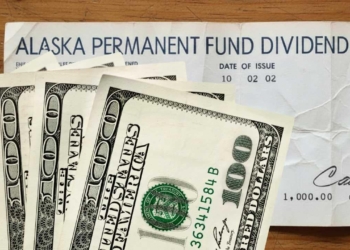The Internal Revenue Service (IRS) confirmed on August 7, 2025, that Forms W-2, 1099, and 941, and withholding tables, will remain unchanged for the 2025 tax year. This decision seeks to prevent disruptions to the tax process and give taxpayers and employers a period of adaptation to the changes established by the One Big Beautiful Bill.
“Withholding levels will remain the same to allow more time,” the agency stated in its official statement. Tax returns for the 2025 tax year must be filed throughout 2026.
Tax refunds: projections say they could be bigger
The resolution implies that, during the current cycle, no adjustments will be made to withholding tax related to tips or overtime. However, IRS technical staff are already working on updating formats and protocols for fiscal year 2026, when the core provisions of the regulations will take effect.
These will include federal deductions on qualified tip income (up to $25,000) and qualified overtime (up to $12,500), according to the legal text approved on July 4.
Although the IRS has not expressly confirmed that taxpayers will receive larger refunds in 2026, independent analysts project that the current withholding—adjusted without considering the new deductions—could translate into larger refunds at tax time.
It should be noted that this hypothesis still lacks institutional support. Official sources insist that the current focus is on ensuring an orderly transition for tip and overtime deductions.
The One Big Beautiful Bill Act (P.L. 119-21) establishes that these tax benefits will apply from fiscal year 2025 through 2028, regardless of whether the taxpayer itemizes expenses. For practical implementation, the IRS must publish a list of eligible occupations and updated versions of their forms by October 2, 2025. Until that date, businesses will continue to use the current formats without modifications.
Mechanics of tax deductions
The regulations introduce two tax-reduction instruments: the first applies to qualified tips, allowing workers in sectors with regular tips to deduct up to $25,000 from their federal taxable income. The second applies to qualified overtime, with caps of $12,500 ($25,000 for joint returns) on the excess portion of regular pay. Both mechanisms incorporate phase-out provisions based on modified adjusted gross income (MAGI).
At the same time, the law expands other benefits: it raises the state and local tax (SALT) deduction limit to $40,000 for specific segments, incorporates additional benefits for seniors, and increases the amount of the child tax credit. Internal IRS documentation clarifies that these changes will not alter withholdings in 2025, although they will directly impact tax returns filed in 2026.
The reason your 2026 tax refund might be huge
Companies’ payroll departments must maintain updated forms throughout 2025, awaiting IRS updates for the next tax cycle. Taxpayers, for their part, will need to keep detailed records of their tip and overtime earnings, documentation that will be a fundamental requirement when filing taxes in 2026.
The agency recommends monitoring its official channels, where final guidelines will be published before October 2, 2025. While this process is underway, the IRS has not provided quantitative estimates of the impact on tax refunds.
The IRS recommends that each taxpayer evaluate their individual situation and, if they have substantial questions, consult tax advisors before the 2026 filing season.







